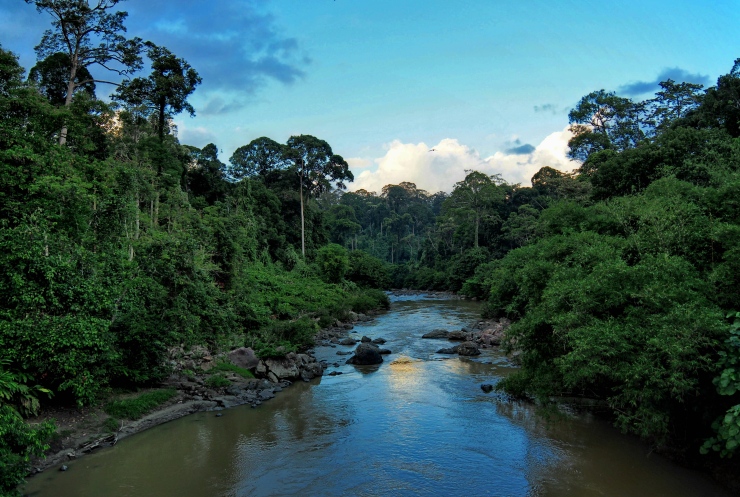In 2019 a major mast fruiting event took place in the forests of North Borneo. Thousands of trees across the forest flowered, producing millions of seeds and an abundance of new life. This year I returned to Borneo to measure the functional traits of the germinating seedlings. Our aim: understand how logging impacts the recruitment of the next generation of trees.
I recently returned from a one month trip to Danum Valley, a prisitine primary lowland dipterocarp forest surrounded by an expanse of previously logged forest. Here in collaboration with the South-East Asia Rainforest Research Partnership (SEARRP) we set up seedling monitoring plots in the primary and logged forests shortly after the masting event of 2019. Six months later, the fallen seeds had germinated and begun their long journey towards becoming forest giants. Not every seed can make it to the canopy though, with the vast majority dying long beforehand. Our new project aims to understand what drives seedling mortality and how logging changes the dynamics of the seedling community.
Drought, carbon starvation, herbivory, and nutrient limitation can all cause death of seedlings in the first few months following germination. One way to reveal the major mode of mortality in seeedlings is to measure their traits and reveal their growth strategies. Do they invest in roots or shoots? Do they have the potential for high rates of photosynthesis? Do they have small, thick leaves or large, thin leaves? Do they have high water content? All of these questions can be answered by the traits measured during our fieldwork. These traits included nutrient concentrations, relative biomass partitions, root to shoot ratios, leaf mass per area, leaf size, leaf strength and the percentage of leaf eaten by herbivores.
From one month of fieldwork, myself and my post-doc colleague Paulo Bittencourt collected and measured traits of over 300 seedlings across 10 different species found in the primary and logged forests. Each day we trekked into the forest to collect seedlings before returning to the lab to measure their traits. From spending time in the forest, it quickly became apparent that there were large differences between the logged and primary forests with most of the large trees already removed from the logged forests resulting in the formation of large canopy gaps. It was not just the canopy that appeared different however. The forest floor looked dramatically different too with large skid trails and a visibly smaller number of seedlings present in the logged forest.
But has logging affected the recruitment of the next generation of trees? From analysis of our functional trait data we hope to reveal how seedling growth strategies and drivers of mortality might have been altered.
- In 2019, the forests of North Borneo underwent a mast fruiting event. This phenomenon only occurs every 5-10 years, with an enormous abundance of seeds produced. An incredible diversity of seeds was collected in Danum Valley during the masting event last year.

- The primary (left) and logged (right) forests were visibly different with a greater abundance of seedlings covering the forest floor of the primary forest.
- Each day fieldwork started with the collection of seedling material before returning to the lab to measure their traits. First seedlings were found, before being removed from the soil. The roots were cut to separate the above and belowground organs before being sealed in ziplock bags with a unique label.
- Seedlings were processed each afternoon back at the lab. We cleaned, weighed and measured the length of the roots, stems and leaves. In addition we measured leaf thickness, leaf strength and scanned the leaves to get leaf area. Finally the seedlings were placed in paper bags before being dried for further lab analyses.

- Danum Valley forest was a stunning place to undertake fieldwork. Photo copyright: David Bartholomew
- As well as the world’s tallest flowering trees, Danum valley has a great diversity of animals. For more photos, check out my portfolio.



































